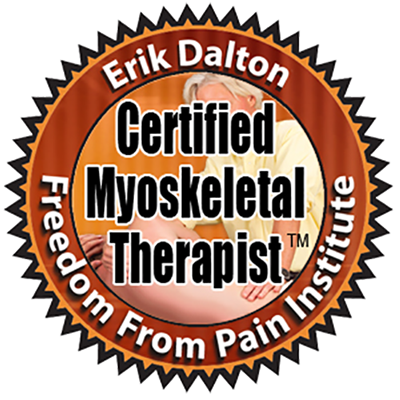News: November 2014
Unraveling the Mystery of Pain - Part 3
 In my last newsletter, we learned how pain and perception go hand in hand. In this article, we'll see how our nervous systems can go haywire, firing off pain signals left and right.
In my last newsletter, we learned how pain and perception go hand in hand. In this article, we'll see how our nervous systems can go haywire, firing off pain signals left and right.
When our nervous systems become hyper-responsive, our pain thresholds decline. This is known as sensitization, or an abnormal reaction to stimulus. There are difference ways sensitization may occur. One is known as peripheral sensitization, and involves our peripheral nervous system. This is a sort of "wind up" stimulus. The pain stimulus keeps reoccurring before the input to our nervous systems has a chance to get back to its baseline. This is better explained with an example - take a pen (retracted) and press it firmly into the back of your hand, hold it a few seconds, then release. Then press again, and release, and press, and release, etc. Have you noticed that the pain escalates each time your press the pen into your hand? (You can stop now by the way.) This is because you haven't given your body the time it needs to process the sensation of the first press and then normalize before the next stimulus. As you continue, each stimulus builds on the last, creating an overly sensitized pain reaction.
Life is like that, isn't it? Events in our lives tend to be spaced too closely together. We are often unable to process our situation and normalize ourselves before the next wave of input. I'm sure this is one reason 40 million adults suffer from anxiety disorders, the most common mental illness in the United States.
But I digress. In an interesting study, a nerve fiber was isolated and stimulated once. This fiber was hypersensitive for the next three minutes, after the stimulus was removed. When the stimulus continued one time per second for 20 seconds, similar to our pen in the back of the hand example, the nerve fiber was hypersensitive for the next 90 minutes! So if someone were to come along in the next hour and press on the back of your hand where you placed your pen, you might jump. The person might think you're crazy, but in reality, it's sensitization. Extremely low pain tolerance is called allodynia, in which even gentle touch causes pain.
Central sensitization affects the central nervous system and is the sum total of several different tissue injuries that occur over time. The pain centers in our brains light up and have a trickle down affect, causing everything in the body to be hypersensitive. Fibromyalgia is a perfect example.
General relaxation massage can be extremely powerful in alleviating pain from these kinds of disorders. Massage helps to quiet and normalize the nervous system. Reducing bits and pieces of neural input in the system actually causes body-wide pain relief. If as the saying goes, a rising tide lifts all boats, then all the boats also lower when the tide goes out.
Join me in my next issue when we'll explore your brain's map of your body and how easy it is to get lost!
Sources: Douglas Nelson, The World Massage Conference, Anxiety and Depression Association of America
(This newsletter is part of a short series of articles dedicated to exploring and unraveling the mystery of pain. See previous articles here.)
Treat migraines with massage
Migraines are nervous system disorders and another example of central sensitization (see article above). But massage therapy has proven tremendously effective for migraine sufferers. The following are some known benefits:
Stress reduction: Stress is a huge migraine trigger. By alleviating stress, massage therapy can reduce the severity, duration, and frequency of migraines. Stress reduction also helps to improve sleep, concentration, blood circulation, and energy levels, while decreasing anxiety and fatigue - both common triggers of migraines.
Drug-free: Massage is a non-pharmacologic intervention. Evidence shows that massage therapy can help prevent migraines from occurring, and even relieve pain during an acute attack. Medications have been shown effective in alleviating migraines as well, but patients run the risk of side effects including rebound headaches from medication overuse.
Pain relief: Massage therapy releases endorphins - chemicals in the body that are considered natural painkillers. Endorphins calm the nervous system and reduce the sensation of pain.
It feels good: Simple as that - massage feels good. When we feel good, we are happier, more optimistic, and more relaxed, all of which help to negate potential migraine triggers.
Now stop reading (staring at the computer monitor for too long can induce a headache) and go get a massage!
Source: Massage Therapy Journal, summer 2013
What's new with me ...
I'm so happy to have reopened my practice and am enjoying seeing more of you again! I will continue to update you as I expand my hours.
I hope everyone had a fun Halloween! Sienna went as her favorite, furry, lovable pal Grover. Click here to see photos!

Call or text me today
917-359-8641
I'd be happy to answer
any questions you have!
Massage@Rachel-Richards.com
Subscribe to my Youtube channel!
Did you know?





